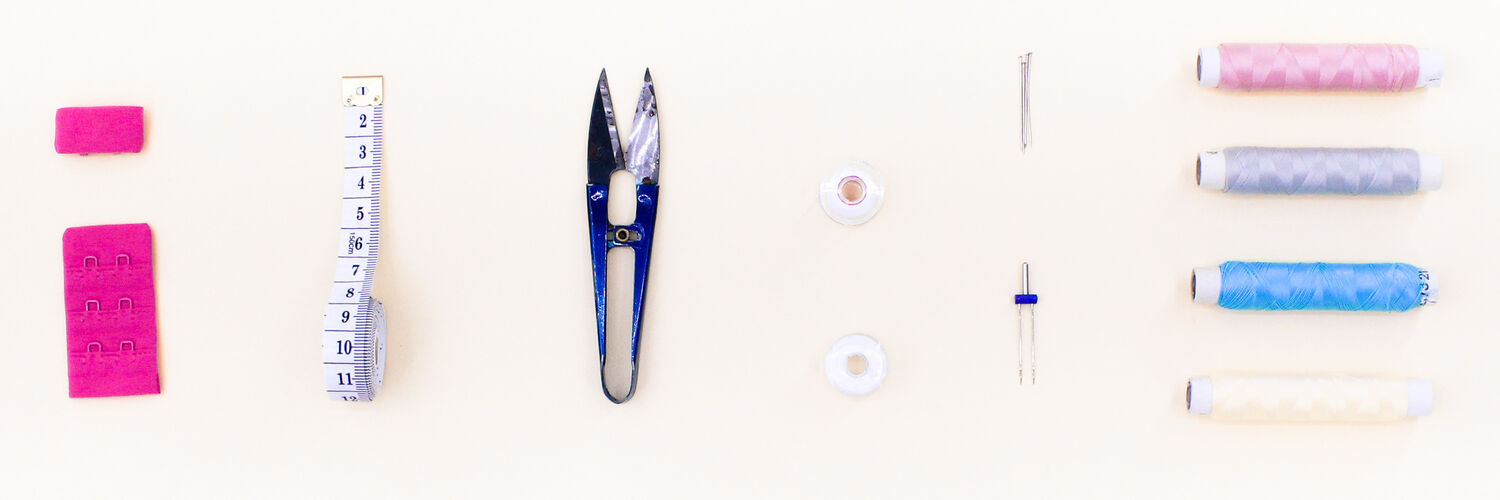
Lingerie sewing Glossary - All the terms to know
A
ATTACH AND FLIP THE ELASTIC :
| Lingerie sewing operation composed by two step: 1/ ATTACH THE ELASTIC: Place the wrong side of the elastic on the top of the right side of the fabric, edge to edge. Make a first zigzag stitch on the inside edge of the elastic. |
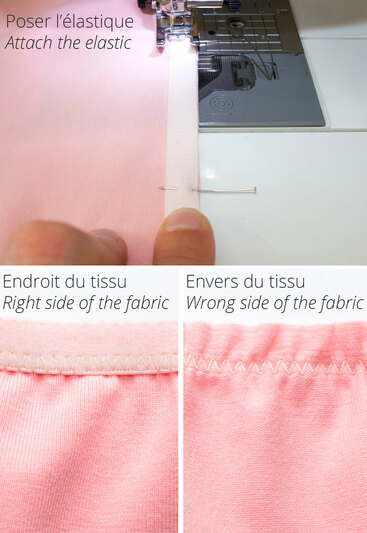 |
| 2/ FLIP THE ELASTIC: Flip the elastic to the wrong side of the fabric, to position it on the skin side. Then make a second zigzag stitching on the other edge of the elastic. | 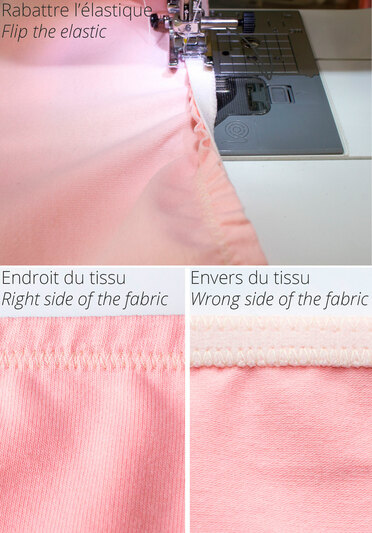 |
B
BASTE / BASTING :
| Sewing stitch with a long length stitch that enables to maintain several layers of fabric together. | 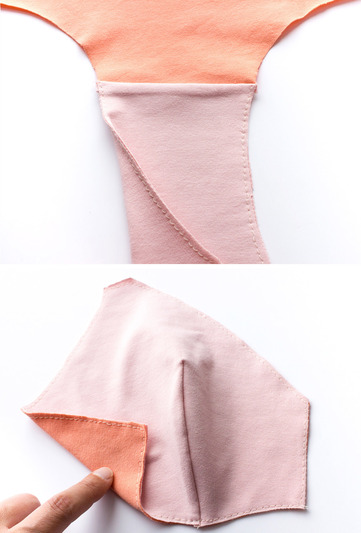 |
BARTACK :
| Type of seam of closely sewn stitchs, made to secure a seam and avoid elastics from fraying. Bar tacks are made at the end of the sewing works, during finishing. |
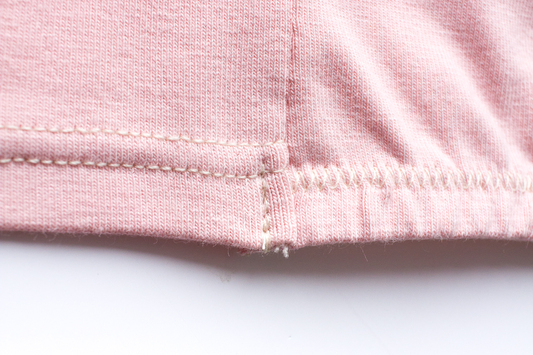 |
BOURDON STITCH / ROLLED HEM:
| An other narrow finishing stitch, made with a « rolled hem » presser foot on the basic sewing machine (refer to the instruction manual of each sewing machine). | 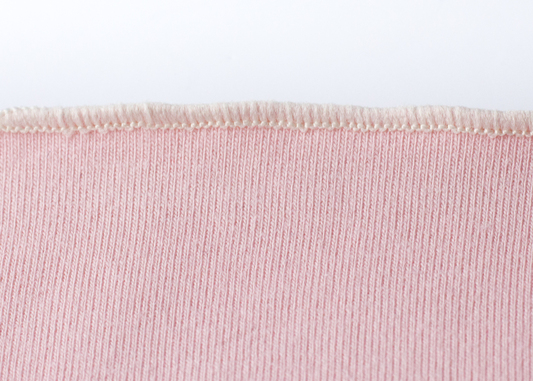 |
D
DART MARKING / CURVING DART EDGE :
| Darts are essential because they give the good shape and bulk of bra cups. For garment such as shirt or dress, darts are made in a straight line until the end of seam allowance. Just like the fisrt picture on right. In lingerie, we use stretchable fabrics, so if we make the dart gthe same way as for garment, we will have a final shape with a “peak” - you know what we mean? It’s like the famous costume of Madonna 😉 |
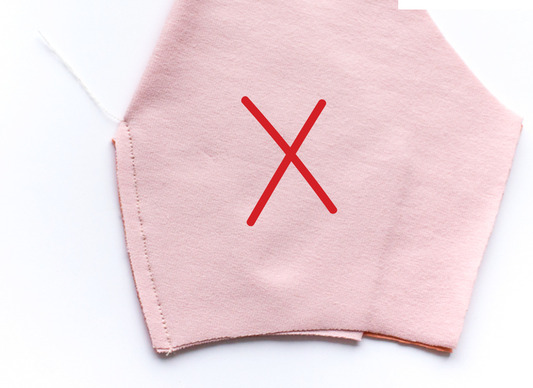 |
| For a smooth and well fitted dart, we make a “curved edge”, placing a mark 2cm (¾ in) above the seam allowance. At the end of the dart seam, instead of making a straight dart, finish the dart seam in a curved line, until reaching the mark. |
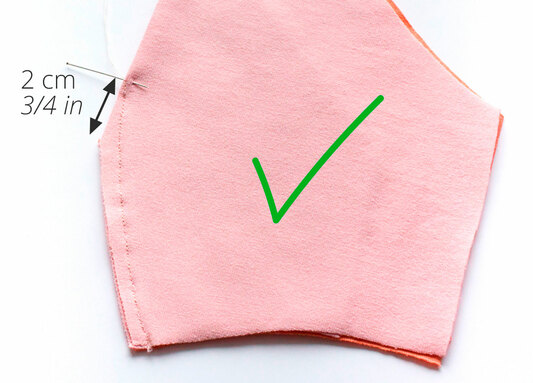 |
(MOST STRETCH) DIRECTION :
For stretch fabrics, we place the sewing patterns according to its most stretch direction.
It’s necessary to check this stretch direction before cutting the fabric because the direction can change according to the the knitting of each cloth.
For instance:
| For a jersey in cotton/spandex: the most stretch direction is horizontal, the grain line is vertical same as sewing pattern. | 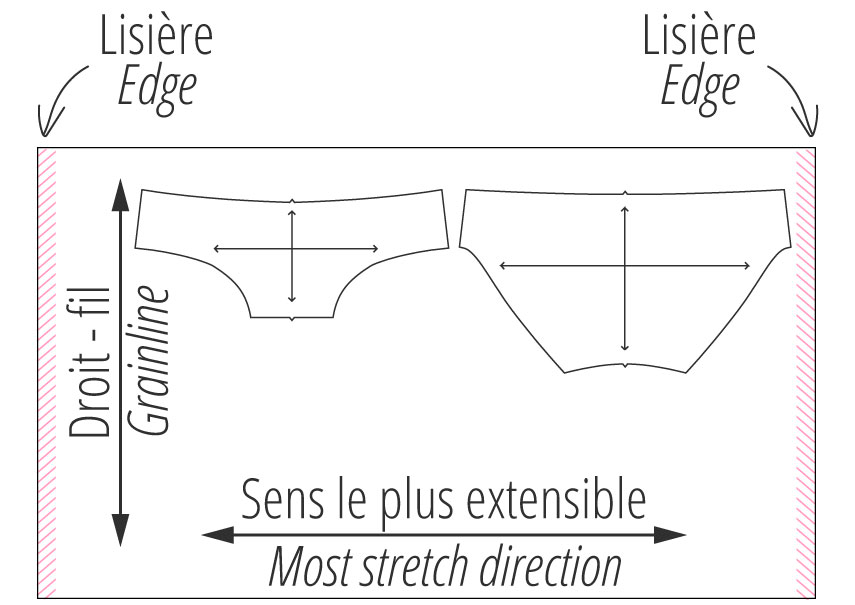 |
| For a fabric such as lace or stretch mesh: the most stretch direction is vertical, the grain line should be placed horizontally. | 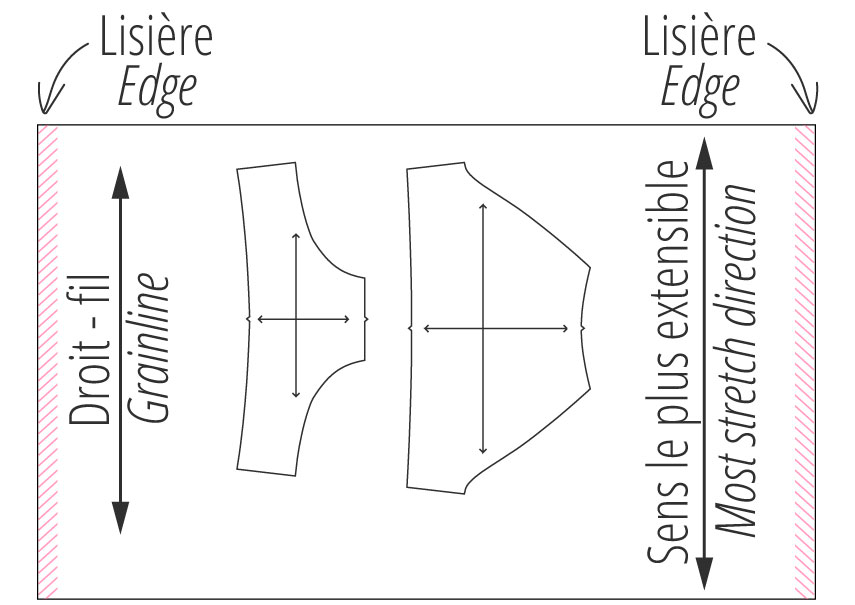 |
For non-stretch fabrics such as woven fabrics, read the definition of : WARP / WEFT / BIAS
F
FINISHING / NEATING THE EDGES :
| To prevent the fabric from fraying, it is advised to make a finishing seam on the edge with a zigzag stitch or with an overlock. | 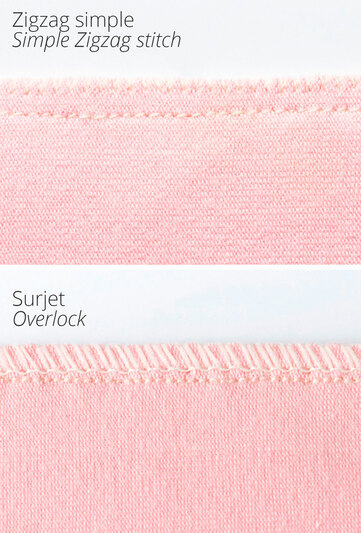 |
L
LACE SCALLOPS :
The scalloped edge of a lace represents the decorative festooned part on the sides, with most of of the time a waved shape.
In fashion industry, we call the scalloped edge, the "lace teeth", and it's composed in 3 parts :
| 1. The valley of the scallop. Correspond to an imaginary line, that we will draw on the bottom of the scallop, in the lower part. 2. The peak of the scallop. Correspond to an imaginary line, that we will draw on the edge of the scallop, in the upper part. 3. The middle of the scallop, correspond, logically, to the line between the peak and the valley of the scallop. To know how to cut lace, we invite you to read our article about this item. |
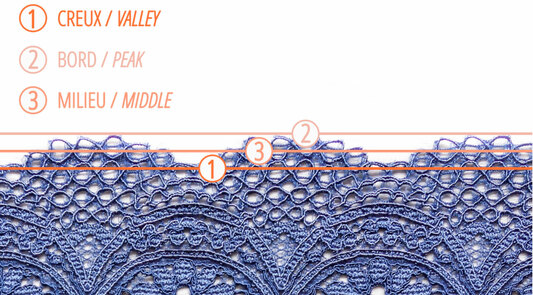 |
N
NOTCHES :
| Enables to superimpose and match several pieces of pattern to sew them without any interval. On our patterns, the notches are shown on a «V» shape, to be easily seen on light or fabric such as lace. |
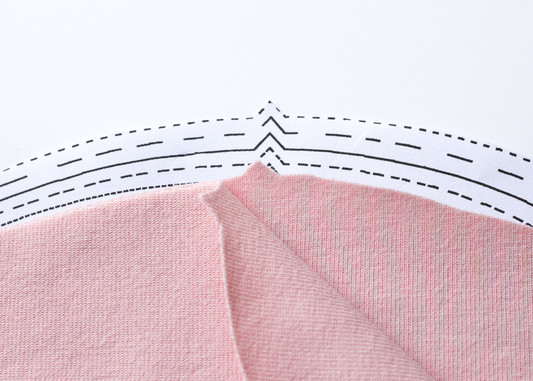 |
R
RIGHT SIDE - WRONG SIDE OF THE FABRIC :
| If the fabric is printed, it’s very easy to know! The right side is the one with the all-over. If it’s a plain fabric, or if it’s a lace, we can recognize the right side by its clean and colorful aspect. The wrong side is often pale and less polished. Some fabrics, such as mesh or interlock have the same aspect on the right and wrong side, so you can’t be wrong! |
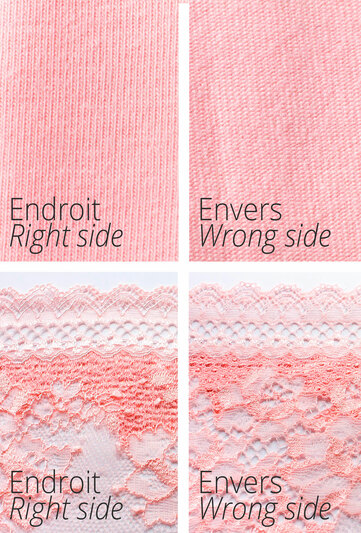 |
S
SEAM :
| A seam is when you sew several pieces of fabric together, with a straight stitch or an overlock stitch. | 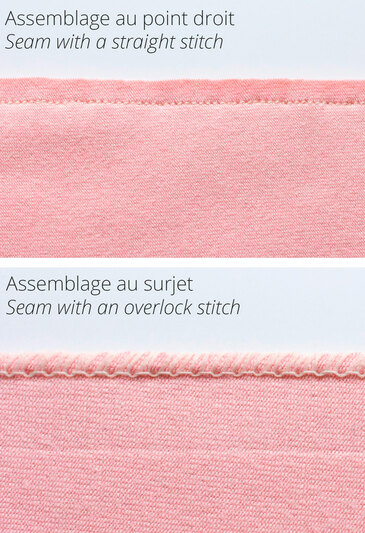 |
SEAM ALLOWANCE :
| This is the distance between the edge of the pattern and the seam line. Seam allowance are already included in our patterns, their width from 5mm (13/64 in) to 1cm (3/8 in) depends on the type of seam you have to make. We give you all seam allowances details into each model tutorial 🙂 |
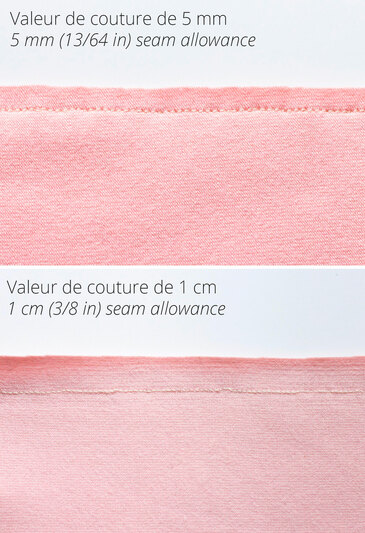 |
SINGLE FOLD HEM :
| Type of finishing seam consisting of folding the edge of the fabric on the inside of the underwear. It’s a hem with only one fold. For lingerie, we use this type of seam to make panties thigh finishing. We can make it with a zigzag stitch or with a double needle stitch. It is better to test the setup of the machine on fabric scraps to be sure that this stitch is elastic enough 🙂 |
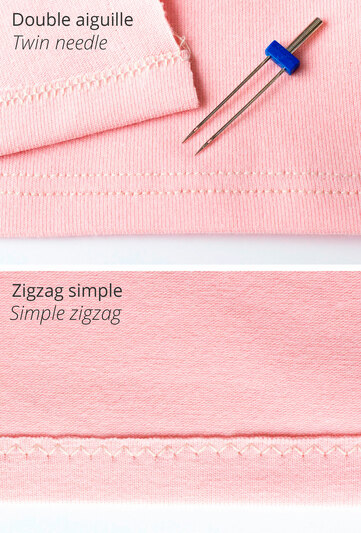 |
SHEATH SEAM :
| Type of seam which enables to hide the seam allowance between two layers of fabric. In lingerie, we use sheath seams on the gusset and darts assembling seams to ensure comfort. The seam is invisible on the right and wrong sides of because it’s taken in "sandwich" between the two layers of fabric. |
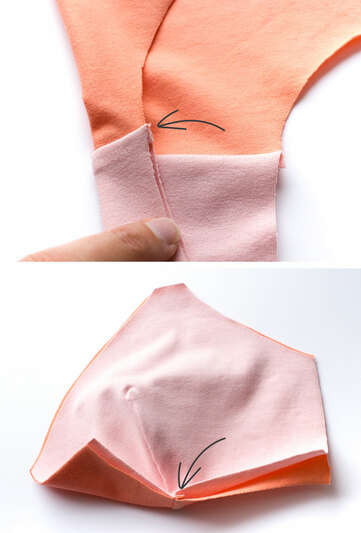 |
SPLIT THE ELASTIC GARTHERS :
| To obtain nice and evenly distributed gathers, we recommend to : Mark on the fabric the 4 quarters of the length to be gathered (with pins or washable chalk). The same way, split the 4 quarters of the length of the elastic, and make it match. |
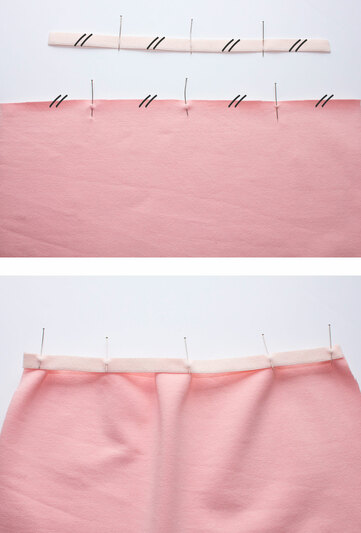 |
STRAIGHT STITCH :
| Basic stitch point for sewing machine. This stitch is not stretchable, in lingerie we use it for vertical seams, topstitches, or basting. |
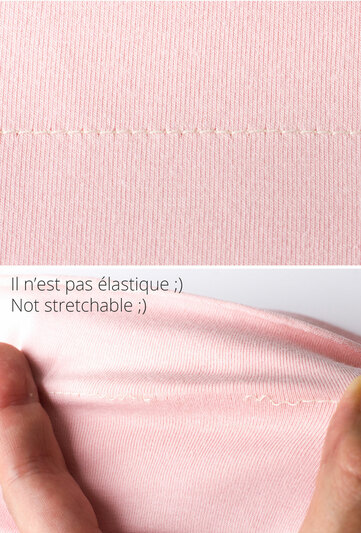 |
T
TOPSTITCHING :
| Topstitch makes it possible to orient and maintain a seam in the chosen direction (up, down or side). It can be made with straight seam (non-stretch) or zigzag (stretch). |
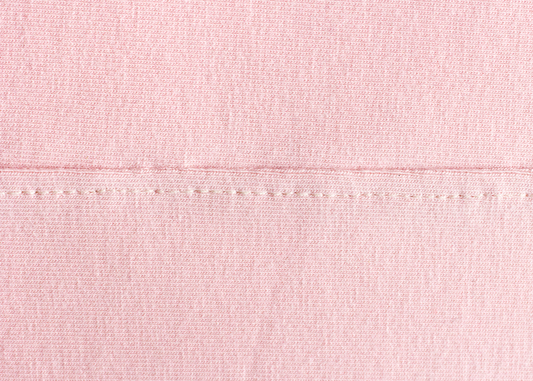 |
W
WARP / WEFT / BIAIS :
| Technical terms used to talk about woven fabrics popeline, serge, voile, etc). The WARP is the vertical direction, parallel to the edges of the fabric. The WEFT is the horizontal direction, perpendicular to the edges of the fabric. The BIAIS is the diagonal direction, at 45 ° of the warp or weft directions. Unlike the warp and weft, the bias is slightly extensible, so we can use it in lingerie. |
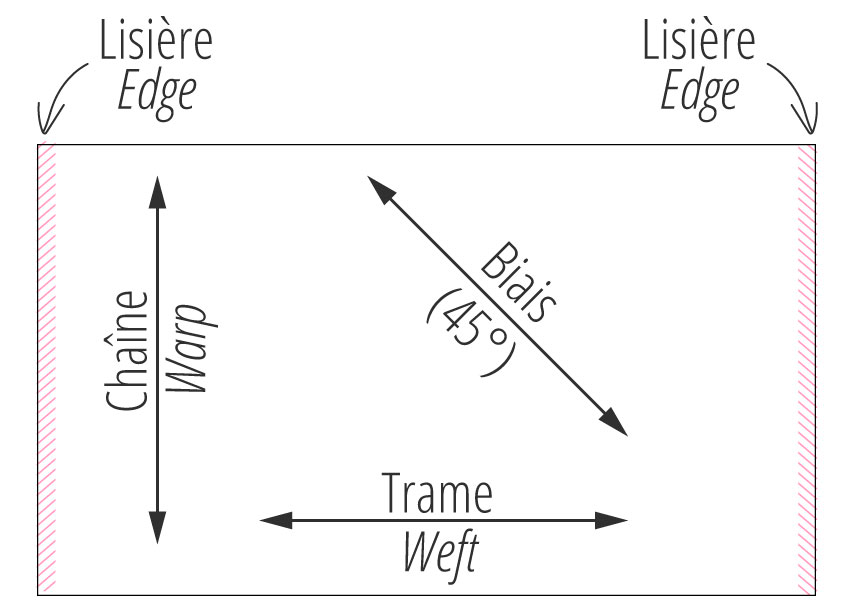 |
Z
ZIGZAG STITCH :
| Stretch sewing stitch, ideal to preserve the stretching of fabrics and elastics. | 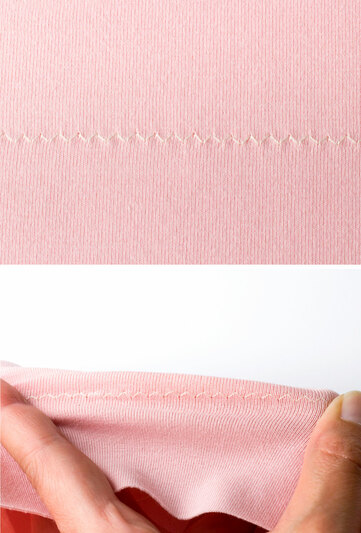 |
ZIGZAG 3 STITCHES :
| Stretch sewing stitch, ideal to attach an elatic sewn flat in one seam operation. It can be adjusted up to 1 cm (⅜ in) width and cover the entire width of the elastic. |
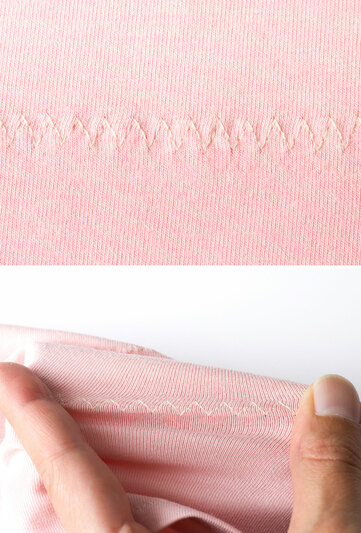 |
Sewing vocabulary has no secrets for you now!
To continue reading, you can read our article : Which supplies may I use to sew lingerie ?
And if you'd like to know more on how to sew an hook & eye, or an adjustable strap, we wrote "Sewing Tips" articles here
We hope these informations helped you, please do not hesitate to contact us if you have any questions:

